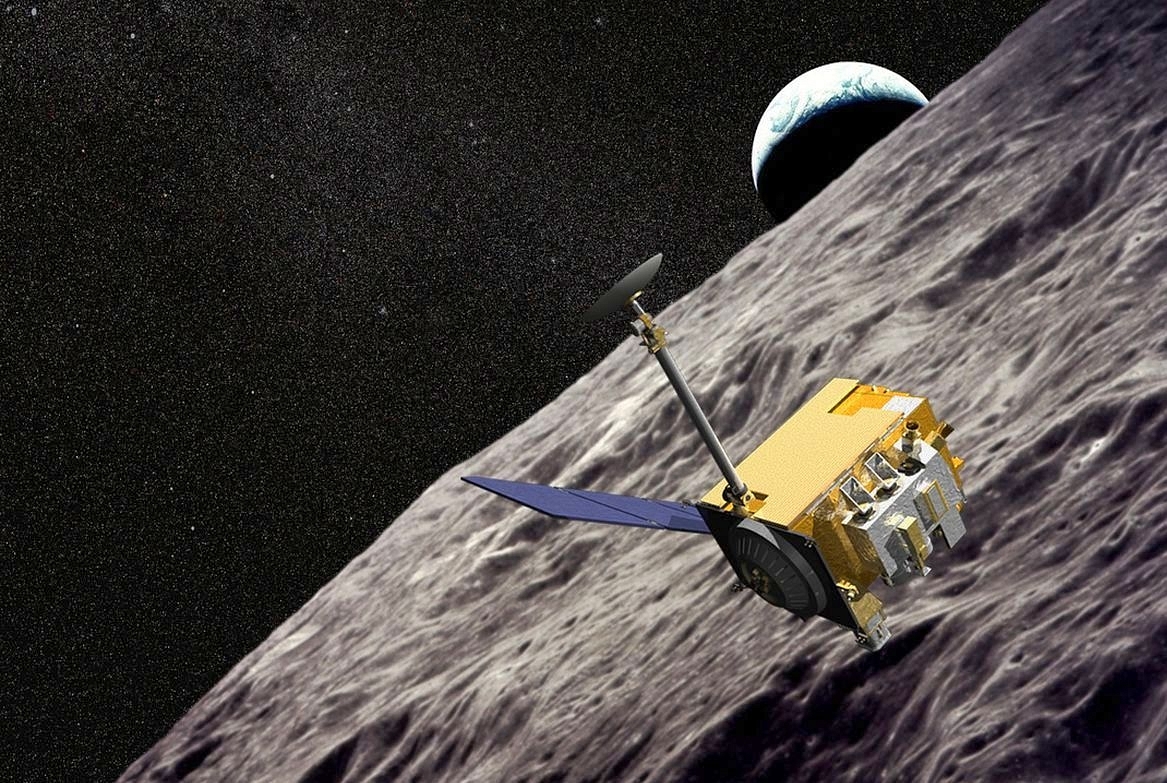News Brief
NASA’s Moon Orbiter Will Photograph Chandrayaan-2 Landing Site Today: Here’s What To Expect
- Here’s what to expect as NASA’s lunar orbiter gets ready to photograph the landing site of Chandrayaan-2’s Vikram lander later today.

Artist’s impression of NASA’s<i> </i>Lunar Reconnaissance Orbiter (LRO) in orbit around the Moon.
As the window of restoring communication with Chandrayaan-2’s Lander continues to shrink, NASA’s Lunar Reconnaissance Orbiter (LRO) will make an attempt to spot Vikram at its landing site during a flyover that will take place later today.
The Lander had hard-landed on the lunar surface on 7 September while attempting the closest ever soft-landing to the south pole of the Moon. Since then, ISRO and NASA have failed to establish communication with the Lander.
LRO’s flyover comes days after Chandrayaan-2’s Orbiter had managed to spot the Lander around 500 meters away from its designated landing site. The Lander is believed to have hit the lunar surface at a much higher velocity than it should have and is not in the orientation that it was supposed to be, making communication difficult.
There is no clarity on the state in which the Lander is — whether it has disintegrated due to the high-velocity impact with the lunar surface or not. There are many more questions like those regarding its orientation on the lunar surface that are still unanswered.
Moreover, it isn’t clear if the pictures taken by the Chandrayaan-2 Orbiter give answers to these questions. ISRO hasn’t released images of the landing site that the Orbiter took when it spotted Vikram at the landing site.
Therefore, this is what makes LRO’s flyby important.
“Per NASA policy, all LRO data are publicly available,” Noah Petro, LRO’s project scientist at NASA’s Goddard Space Flight Center, has said, confirming that LRO is due to fly over the Vikram landing site on Tuesday, 17 September.
“NASA will share any before and after flyover imagery of the area around the targeted Chandrayaan 2 Vikram lander landing site to support analysis by the Indian Space Research Organisation,” he told spaceflightnow.com.
This will not, however, be the first time that LRO will turn its sensors towards Vikram.
LRO was monitoring the Chandrayaan-2 Lander as it started descending towards the surface of the Moon in the early hours of 7 September.
NASA’s Orbiter was “observing the changes in the exosphere as a result of the rocket effluence coming down,” Jay Jenkins, program executive for the Office of Exploration at NASA's Science Mission Directorate, has been quoted as saying.
The LRO, launched by NASA in 2009, has been orbiting the Moon for a decade now. It carries a system of three high-resolution cameras, two of which are narrow-angle cameras providing images with 50 centimeter (19.7 inch) resolution.
Over the years, LRO has managed to produce high-resolution images of the Moon for various applications, including those of the Apollo landing sites. Most recently, it had captured images of China’s Chang’e 3 and Chang’e 4 Landers on the Moon’s surface, and located the Israeli Beresheet Lander earlier this year.
For the record, Chandrayaan-2 carries a camera with a resolution of 32 cm (12.6 inches) — better than LRO and other lunar orbiter missions to date. It can, therefore, capture much more details of the landing site than LRO.
But again, ISRO has not released the images that the Orbiter has captured, nor have they described what those images show.
While LRO images may be “publicly available”, there are other complications. As pointed out by Petro and others, LRO’s job is tough. Given that the lunar day at Vikram’s landing site, which is equivalent to 14 earth-days, is now about to end, the Sun will be low on the horizon over there.
Near the lunar south pole, where Vikram has landed (around ~71° South of the lunar equator), the Sun does not rise higher than ~19° in the sky. This would create long shadows on the surface, which, in turn, may hide crucial details in the pictures the LRO will take.
In case LRO misses the landing site today for some reason, it will have the opportunity to capture it later, but only after the freezing lunar night — that will kick-in sometime later this week — ends. The Lander is unlikely to survive the lunar night as the temperature may drop up to -180º Celsius.
If LRO captures enough details today, some of the questions surrounding Vikram’s fate could soon be answered. If not, the wait will be long.
Since the Israeli Beresheet Lander crashed, LRO has been trying to search NASA’s Retroreflector that it was carrying. The Vikram-Lander also carried NASA’s Laser Retroreflector Array, a passive instrument for the precise measurement of the distance between the Earth and the Moon, and NASA will continue to look for it.
The Laser Retroreflector is expected to have survived the hard landing.
Support Swarajya's 50 Ground Reports Project & Sponsor A Story
Every general election Swarajya does a 50 ground reports project.
Aimed only at serious readers and those who appreciate the nuances of political undercurrents, the project provides a sense of India's electoral landscape. As you know, these reports are produced after considerable investment of travel, time and effort on the ground.
This time too we've kicked off the project in style and have covered over 30 constituencies already. If you're someone who appreciates such work and have enjoyed our coverage please consider sponsoring a ground report for just Rs 2999 to Rs 19,999 - it goes a long way in helping us produce more quality reportage.
You can also back this project by becoming a subscriber for as little as Rs 999 - so do click on this links and choose a plan that suits you and back us.
Click below to contribute.
Latest